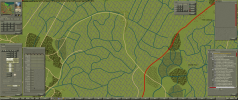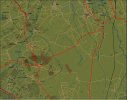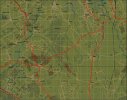GeoNL
Member
So, I am a little confused as to the definition of both. I am constructing a map that is based in the north part of the Netherlands (mostly in the North-West part of Drenthe). There are many, as they say in Dutch, "dieps" here. Which basically are "streams". However, the default movements effects for streams in the game are 10 for motorised and 30 for non-motorised. I am unsure if I should substitute some of these streams for light river or not. Since there is a situation up here where several streams run into a somekind of canal, which is closest to a light river I suppose. It's kinda awkward in gameplay to have bridges on that canal, and attached to a stream which makes the bridge useless in the end.
Some streams are small'ish, others are more broad.
1. Does this mean that any motorised vehicle is able to cross a stream with ease (even if much slower)?
2. I am unsure what's best, go for realism, or uplift streams to light river to make things a little less awkward? Trying to figure if , let's say the average Sherman tank was able to cross a "stream". And how fast.
Some streams are small'ish, others are more broad.
1. Does this mean that any motorised vehicle is able to cross a stream with ease (even if much slower)?
2. I am unsure what's best, go for realism, or uplift streams to light river to make things a little less awkward? Trying to figure if , let's say the average Sherman tank was able to cross a "stream". And how fast.
Last edited:


